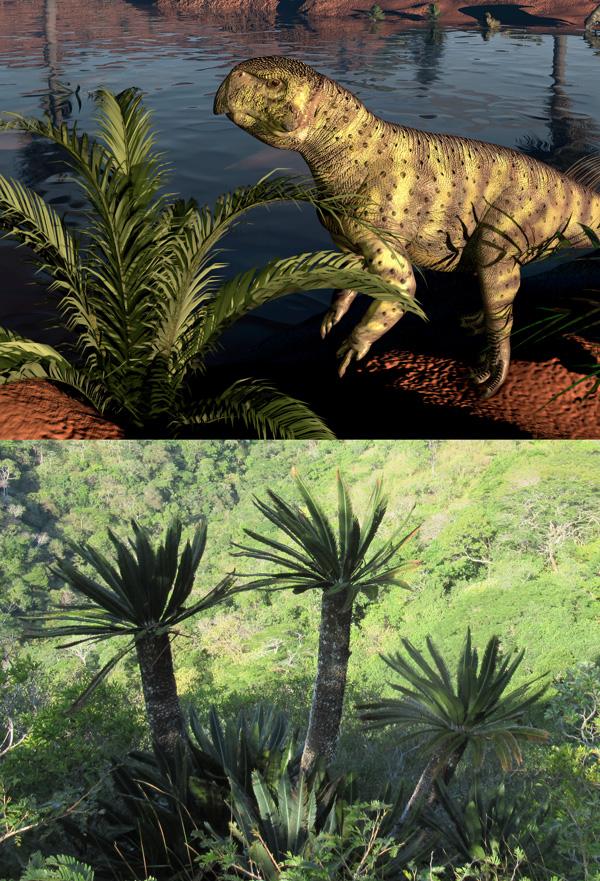
Figure 1: Ancestors of today's cycads co-existed with the dinosaurs (top). Fossils reveal that they haven't changed very much. Now a study of cycads in Mexico (bottom) has revealed how they were able to survive without out changing much. Top: © WALTER MYERS/SCIENCE PHOTO LIBRARY Bottom: © 2024 RIKEN iTHEMS
A RIKEN-led study has revealed some strategies that have allowed cycads-tropical or subtropical plants with thick wood trucks crowned with fern-like leaves-to survive and diversify over the ages1.
Cycads are one of nature's great survivors. Thought to have originated about 270 million years ago, they've weathered three mass-extinction events without changing very much.
"Cycads are living fossils-they've retained many traits observed in fossils from 200 million years ago," says José Gutiérrez-Ortega of the RIKEN Interdisciplinary Theoretical and Mathematical Sciences Program (iTHEMS). "Observing cycads today is like watching dinosaurs, only in the realm of plants."
But whereas dinosaurs have long since disappeared and their descendants-birds-differ greatly from them, more than 370 species of cycads, which resemble their fossil ancestors, are still living today.
Hailing from Mexico, Gutiérrez-Ortega has long been fascinated by the gymnosperms. "Near my hometown, there's a cycad species that I studied a lot," he recalls. "I became interested in many different aspects of cycad biology."
One thing that intrigued Gutiérrez-Ortega was how cycads have managed to survive so long without evolving much. "They're like time capsules," he says. "If we can discover how they survived and diversified, we might uncover why seed evolution was one of the most successful strategies in plant evolution."
To discover the secrets to cycads' extraordinary capacity to survive and diversify, Gutiérrez-Ortega and co-workers have reviewed nearly 200 published studies. They focused on 18 cycad species belonging to the same genus that live in different habitats in Mexico and Honduras.
They found that cycads tended to avoid changing by living in microsites that most closely resembled their original habitat. For example, Mexico has grown increasingly arid over millions of years. Instead of adapting to the drier conditions, cycads tended to live in the most humid microsites. Isolated pockets of cycads at different microsites eventually evolved into new species.
This strategy slowed the pace of evolutionary change to a crawl. "They are evolving-just very, very slowly," says Gutiérrez-Ortega.
Gutiérrez-Ortega suspects that other plants might use a similar strategy for survival and diversification. "This might be a common strategy employed by plants," he says. "We're just not aware of it yet."
The team also found that changes to the ecological landscape over millions of years caused communities of cycads to become isolated from each other. "We identified a clear pattern between geography and plant evolution," says Gutiérrez-Ortega. "For example, mountains form over millions of years, and so groups became separated by mountains."
Ironically, after surviving for so long, many cycad species are endangered today due to threats such as illegal trade. "They're highly iconic plants and very attractive to collectors," notes Gutiérrez-Ortega.

José Gutiérrez-Ortega and co-workers have found that cycads adopt the strategy of niche conservatism to survive changing circumstances, which promotes their diversification. © 2024 RIKEN






